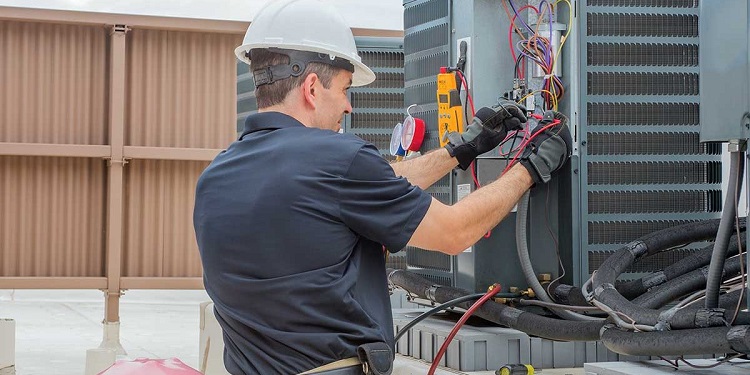When it comes to keeping our homes comfortable, hot water heaters are an essential component of any HVAC system. These units work tirelessly to provide us with warm showers, clean dishes, and cozy indoor temperatures. However, when it comes time for installation or replacement, understanding the basics is crucial. In this guide, we’ll cover everything you need to know about installing a hot water heater in your home.
Table of Contents
The Different Types of Hot Water Heaters
Before we dive into the installation process, it’s essential to understand the different types of hot water heaters available. This will help you determine which unit is best suited for your home and needs. Here are the most common types of hot water heaters:
- Storage Tank Water Heaters: These are the traditional hot water heaters that store and heat a large tank of water. They are cost-effective and suitable for households with high hot water demand.
- Tankless Water Heaters: As the name suggests, these units heat water on demand without storing it in a tank. They are energy-efficient and best for homes with limited space or low hot water usage.
- Heat Pump Water Heaters: This type of hot water heater uses electricity to move heat from one place to another instead of generating it directly. They can be expensive to install but are highly energy-efficient.
- Solar Water Heaters: These units use the sun’s energy to heat water and can significantly reduce your electricity bill. They are ideal for homes in sunny climates.
Traditional Tank Water Heaters
These are the most common type of hot water heaters found in homes. They consist of a large tank filled with heated water and can run on either gas or electricity. While they may be more affordable to purchase, they consume more energy than other options and have a limited supply of hot water.
Tankless Water Heaters
Unlike traditional tank water heaters, tankless units heat water on-demand, which means they only use energy when hot water is needed. This makes them more energy-efficient and cost-effective in the long run. However, they are typically more expensive to purchase and may not be suitable for homes with high hot water demand.
Heat Pump Water Heaters
This type of hot water heater works by transferring heat from the air or ground into the water, making them extremely energy-efficient. They can also act as an air conditioner in warmer months. However, they tend to be pricier than other options and require a significant amount of space for installation.
Steps for Installing a Hot Water Heater
Hot water installation is a critical component in residential and commercial buildings, ensuring a reliable supply of hot water for various needs such as bathing, cleaning, and cooking. The process involves selecting and installing a suitable water heater, which can range from traditional tank-style heaters to modern tankless systems. Proper installation requires careful planning, including considerations for the unit’s capacity, energy efficiency, and placement. It’s essential to follow local building codes and manufacturer guidelines to ensure safety and optimal performance. Professional installation often includes connecting the water heater to the plumbing and electrical systems, testing for leaks, and adjusting the temperature settings for energy conservation and user comfort. Just refer to Flow Right Plumbing for accurate information and pricing regarding this. Regular maintenance and periodic inspections are also vital to prolong the life of the water heater and ensure it operates efficiently.
Now that you have an understanding of the different types of hot water heaters, let’s go through the basic steps for installation.
1. Choose the Right Location
The first step is to determine where the hot water heater will be installed. It should be placed in a dry, well-ventilated area with access to gas and electricity if needed.
2. Prepare the Area
Before installing the unit, make sure to clear any obstacles or debris from the designated location and ensure there is enough space for proper ventilation.
3. Disconnect Old Unit (if applicable)
If you’re replacing an old hot water heater, it’s essential to disconnect and remove it properly. This may involve turning off the gas or electricity, draining the tank, and disconnecting any pipes or cables.
4. Install New Water Heater
Follow the manufacturer’s instructions for installing the new unit, making sure to connect all necessary pipes and cables securely. It’s also important to test for leaks before moving on to the next step.
5. Turn on Gas/Electricity
Once the unit is installed, turn on the gas or electricity supply and allow time for it to heat up. Check for any leaks or issues and make adjustments as needed.
6. Insulate Pipes (optional)
To improve energy efficiency, you may choose to insulate the pipes connected to the hot water heater.
Maintaining Your Hot Water Heater
Proper maintenance is key to keeping your hot water heater running efficiently and avoiding costly repairs. Here are some tips for maintaining your unit:
- Regularly check for leaks and signs of damage
- Flush the tank annually to remove sediment build-up
- Inspect and replace anode rods every few years
- Keep the area around the unit clean and free of debris
By understanding the basics of hot water heater installation and maintenance, you can ensure your HVAC system continues to provide you with reliable hot water for years to come. If you’re unsure about tackling this task yourself, it’s always best to consult a professional HVAC technician to ensure proper installation and safety. With the right knowledge and care, your hot water heater will continue to be an essential part of your home’s comfort.

